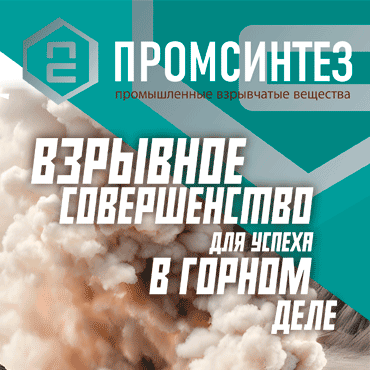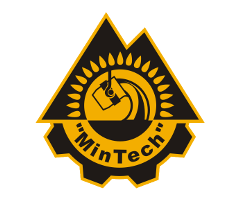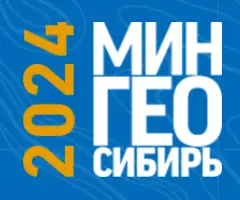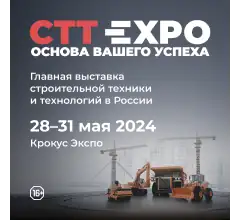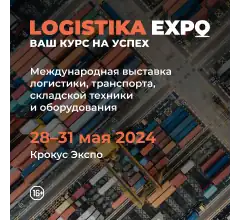Simulation modelling of robotic open and underground coalmining systems
![]() V.V. Sinoviev1, 2, I.S. Kuznetsov1, 2, P.I. Nikolaev1, 2, A.N. Starodubov1, 2
V.V. Sinoviev1, 2, I.S. Kuznetsov1, 2, P.I. Nikolaev1, 2, A.N. Starodubov1, 2
1 Federal Research Center for Coal and Coal Chemistry of the Siberian Branch of the Russian Academy of Sciences, Kemerovo, Russian Federation
2 T. F. Gorbachev Kuzbass State Technical University, Kemerovo, Russian Federation
Russian Mining Industry №S2 / 2023 р. 65-76
Abstract: One of the main challenges in coal production is complicated mining and geological conditions, caused by increasing depth of mining, dust and gas content in the mine air, extreme temperatures, radiation etc., that poses a threat to miners’ health and life and decreases the efficiency of mining companies. Therefore, modern production and technological development of the coal industry is based on development of mining systems without permanent miners’ presence in the mining area through development and implementation of robotized mining machines. Robotization progress is directly related to the solution of scientific problem of choosing rational parameters of mining systems with robotization elements. In its turn, it requires to assess the levels and scope of robotization, matching of operators’ possibilities with robots’ characteristics in man-machine interface (a part of the operations is performed by the mining machine autonomously, the other part is done by the operator remotely), system analysis of combination of traditional and robotized processes in the mining system. Solution of this problems is complicated by the variety of coal seams occurrences, variations in work organization, stochasticity and dynamism of processes, and requires complex consideration of all these factors for choosing the rational parameters for the mining system.Simulation approach to modeling mining robotization allows to resolve the identified problems, that cannot be managed using the analytical and numerical analysis. A queuing network, realized as software using the GPSS World programming language, correctly displays interaction of mining machines in open and underground coalmining. The paper also presents some simulation experiments. Queuing network helps to make a scientifically based choice of the rational parameters for robotic systems in open and underground mining.
Keywords: open coalmining, underground coalmining, simulation modelling, remote control, robotized technologies, queuing systems, queuing network
Acknowledgments: The studies were performed with financial support of the Ministry of Science and Higher Education of the Russian Federation (state assignment of the Federal Research Center of Coal and Coal Chemistry of the Siberian Branch of the Russian Academy of Sciences, Project FWEZ-2021-0002 'Development of efficient technologies of coal mining by robotic mining complexes operating without permanent presence of personnel in mining zones, design of control systems and methods to assess their technical condition and operating life as well as justification of the mineral resource base reproduction' (Reg. No.АААА-А21-121012290021-1)
For citation: Sinoviev V.V., Kuznetsov I.S., Nikolaev P.I., Starodubov A.N. Simulation modelling of robotic open and underground coalmining systems. Russian Mining Industry. 2023;(S2):65–76. https://doi.org/10.30686/1609-9192-2023-S2-65-76
Article info
Received: 02.08.2023
Revised: 31.08.2023
Accepted: 02.09.2023
Information about the authors
Vasily V. Zinoviev – Cand. Sci. (Eng.), Senior Researcher, Federal Research Center for Coal and Coal Chemistry of the Siberian Branch of the Russian Academy of Sciences; Associate Professor, T.F. Gorbachev Kuzbass State Technical University, Kemerovo, Russian Federation; e-mail: This email address is being protected from spambots. You need JavaScript enabled to view it.
Igor S. Kuznetsov – Cand. Sci. (Eng.), Researcher, Federal Research Center for Coal and Coal Chemistry of the Siberian Branch of the Russian Academy of Sciences; T.F. Gorbachev Kuzbass State Technical University, Kemerovo, Russian Federation; e-mail: This email address is being protected from spambots. You need JavaScript enabled to view it.
Petr I. Nikolaev – Cand. Sci. (Eng.), Researcher, Federal Research Center for Coal and Coal Chemistry of the Siberian Branch of the Russian Academy of Sciences; T.F. Gorbachev Kuzbass State Technical University, Kemerovo, Russian Federation; e-mail: This email address is being protected from spambots. You need JavaScript enabled to view it.
Aleksey N. Starodubov – Cand. Sci. (Eng.), Senior Researcher, Federal Research Center for Coal and Coal Chemistry of the Siberian Branch of the Russian Academy of Sciences; Associate Professor, T.F. Gorbachev Kuzbass State Technical University, Kemerovo, Russian Federation; e-mail: This email address is being protected from spambots. You need JavaScript enabled to view it.
Conflict of interest
The authors declare no conflict of interests. All the authors have read and approved the final version of this paper.
References
1. Konyukh V.L. Mine robotics. Kemerovo: Kuzbassvuzizdat; 2000. 335 p. (In Russ.)
2. Shevchenko A.N., Khramovskykh V.A. On application prospects of automated mining methods. Earth Sciences and Subsoil Use. 2019;42(1):104–111. (In Russ.) https://doi.org/10.21285/2541-9455-2019-42-1-104-111
3. Konyukh V., Sinoviev V., Sturgul D. Selection of driving technologies for robotization. In: Proceedings of the 7th International Symposium on Mine Planning and Equipment Selection, Calgary, Canada, 6–9 October 1998. Netherland, CRC Press; 1998, pp. 697– 699.
4. Zhuravlev A.G. Tendencies of open pit transport systems progress employing robotic machines. Problems of Subsoil Use. 2014;(3):164– 175. (In Russ.) Available at: https://trud.igduran.ru/index.php/psu/article/view/71
5. Klebanov D.A., Makeyev M.A., Sizemov D.N. Use of autonomous and remotely operated equipment in surface mining. Russian Mining Industry. 2020;(6):14–18. (In Russ.) https://doi.org/10.30686/1609-9192-2020-6-14-18
6. Cehlar M., Zhironkin S.A., Zhironkina O.V. Digital technologies of industry 4.0 in mining 4.0 – prospects for the development of geotechnology in the XXI Century. Bulletin of the Kuzbass State Technical University. 2020;(3):80–90. (In Russ.) https://doi.org/10.26730/1999-4125-2020-3-80-90
7. Konyukh V.L. Robotic systems for underground work. Automation in Industry. 2008;(5):59–62. (In Russ.)
8. Vladimirov D.Ya. Substantiation of parameters of robotic mining systems in complicated conditions of open pit mining [Abstract of a Ph.D. (Engineering) thesis]. Magnitogorsk; 2016. 195 p. (In Russ.)
9. Tarasov P.I., Zhuravlev A.G., Cherepanov V.A., Razbitsky V.V. Options of application of deserted mining technologies for mining transport. Izvestiya vuzov. Gornyi zhurnal. 2013;(1):104–111. (In Russ.)
10. Shevkun E.B., Kazakov E.A. Robotic systems road transport in open-pit mining. Uchenye zametki TOGU. 2017;8(4):460–472. (In Russ.) Available at: https://pnu.edu.ru/media/ejournal/articles-2017/TGU_8_331.pdf
11. Guchek E.M., Klebanov D.A. Advantages and opportunities of BELAZ robotized dump truck of 130 tons payload capacity. Zoloto i Tekhnologii. 2017;(4):78–81. (In Russ.) Available at: https://zolteh.ru/tekhnika/preimushchestva-i-vozmozhnosti-robotizirovannogokarernogo-samosvala-belaz-gruzopodemnostyu-130-t/
12. Tomashevsky V.N., Zhdanov E.G. Simulation modeling in the GPSS environment. Moscow: Bestseller; 2003. 412 p. (In Russ.)
13. Aliev T.I. Fundamentals of modeling discrete systems. St. Petersburg, SPbGU ITMO; 2009. 363 p. (In Russ.)
14. Kleinrok L. Theory of queuing. Moscow: Mashinostroenie; 1979. 432 p. (In Russ.)
15. Deviatkov V.V. Evolution of simulation – from “arts and sciences” to mass application. In: Simulation modeling. Theory and practice: 8th All-Russian Scientific and Practical Conference on Simulation Modeling and its Application in Science and Industry, St. Petersburg, 18–20 October, 2017. St. Petersburg: National Simulation Society; 2017, pp. 27–36. (In Russ.)
16. Devyatkov V.V. Experience in system analysis of transport system using simulation modeling techniques. Vestnik NTsBZhD. 2017;(1):18–28. (In Russ.)
17. Stenin D.V. Prospects for the development of the pro-duction of autonomous heavy platforms for un-manned mining. Mining Equipment and Electromechanics. 2019;(6):3–8. (In Russ.) https://doi.org/10.26730/1816-4528-2019-6-3-8
18. Zyryanov I.V., Ilbuldin D.Kh., Kondratyuk A.P. Parameters of a mine fleet remote control system in conditions of the Udachny mining & processing division. Russian Mining Industry. 2016;(5):49–51. (In Russ.)
19. Larsson J. Unmanned operations of load-haul-dump vehicles in mining environments. Orebro University; 2011. 68 p.
20. Nikitenko M.S., Kizilov S.A., Khudonogov D.Yu. Analysis of approaches to autonomous vehicle control. Modern High Technologies. 2022;(12-2):278–283. (In Russ.) Available at: https://top-technologies.ru/ru/article/view?id=39472



